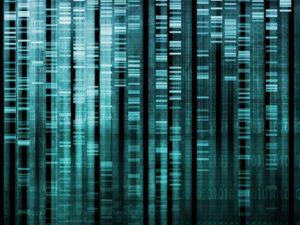Archive for the ‘biological’ category: Page 193
Dec 16, 2017
Organized Crime Is Being Decentralized
Posted by Shane Hinshaw in categories: 3D printing, bioengineering, biological
Every time there’s a new technology, criminals immediately take advantage of it, explains Steven Kotler. It’s only a matter of time before they find new, nefarious uses for 3D printing and synthetic biology.
Read more
Dec 15, 2017
Bioquark Inc. — Aging Boomers Podcast
Posted by Ira S. Pastor in categories: aging, bioengineering, biological, cryonics, genetics, health, science, transhumanism
Tags: aging, anti-aging, biotech, biotechnology, health, healthspan, immortality, longevity
Dec 15, 2017
Bioquark Inc. — Biotech and Beyond — Aquarian Radio
Posted by Ira S. Pastor in categories: aging, alien life, astronomy, bioengineering, biological, cosmology, futurism, genetics, health
Dec 15, 2017
Bioquark Inc. — Health & Wellness — Freedom Talk Radio UK
Posted by Ira S. Pastor in categories: aging, bioengineering, biological, biotech/medical, DNA, genetics, health, life extension, neuroscience, transhumanism
Tags: aging, anti-aging, biotech, biotechnology, health, healthspan, immortality, longevity
Dec 15, 2017
Bioquark Inc. — Biotech / Longevity — George Wilder Jr. Show
Posted by Ira S. Pastor in categories: anti-gravity, bioengineering, biological, biotech/medical, cryonics, health, life extension, neuroscience, science, transhumanism
Tags: aging, anti-aging, biotech, biotechnology, health, healthspan, immortality, longevity
Dec 15, 2017
Bioquark Inc. — Ira Pastor — Life After Death Society Podcast
Posted by Ira S. Pastor in categories: aging, bioengineering, biological, cosmology, cryonics, disruptive technology, DNA, futurism, genetics, health
Dec 15, 2017
Bioquark Inc. — Age Reversal — Before the First Cup – UCYTV
Posted by Ira S. Pastor in categories: aging, bioengineering, biological, genetics, health, life extension, science, transhumanism
Tags: aging, anti-aging, biotech, biotechnology, health, healthspan, Life extension, longevity
Dec 15, 2017
Bioquark Inc. — Turning Back Time — Back Room Stewdios Podcast
Posted by Ira S. Pastor in categories: aging, biological, biotech/medical, business, cryonics, DNA, futurism, genetics, health, life extension
Tags: aging, anti-aging, biotech, biotechnology, health, healthspan, immortality, longevity














